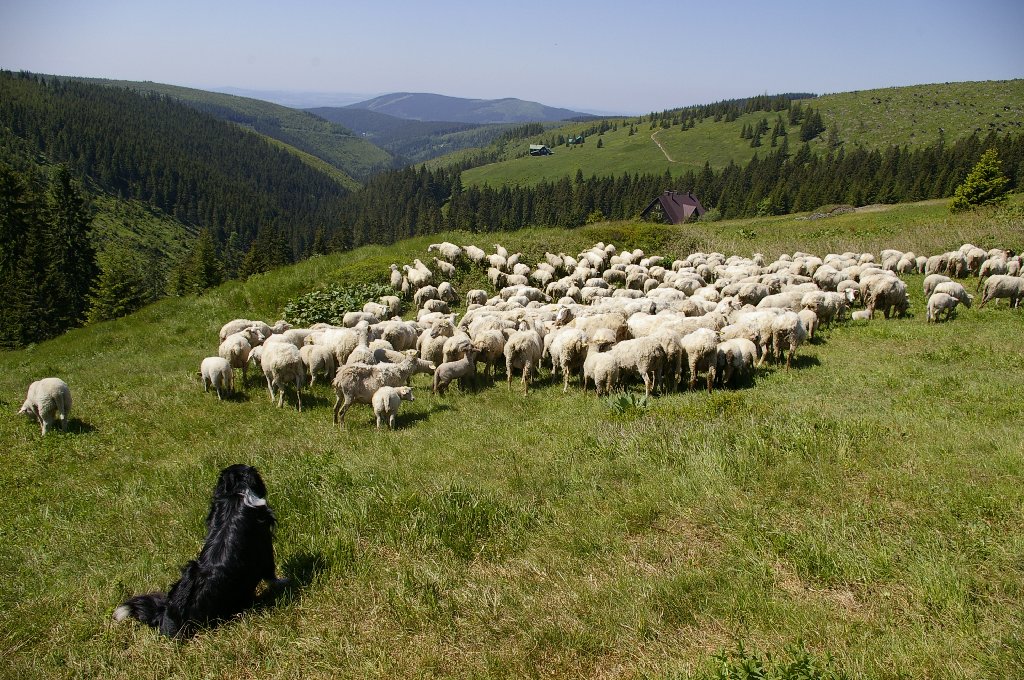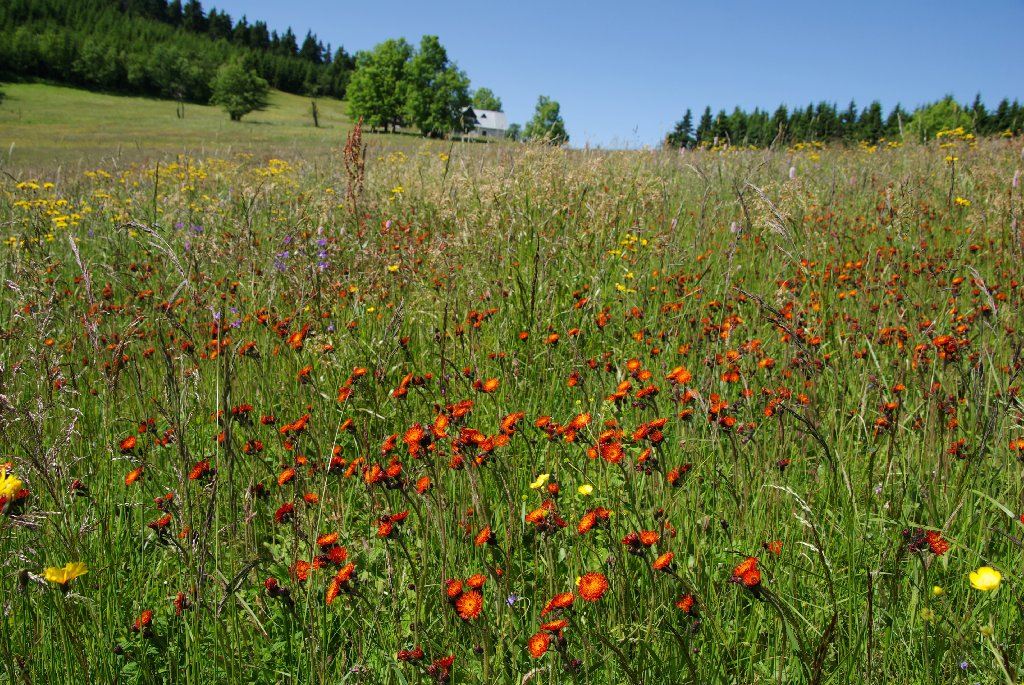Our vision
The project has been helping the meadows of Krkonoše since 
2012. The aim of the project is the restoration of species-rich nardus grasslands (6230*, 6510, 6520) by recovering and support of earlier traditional agricultural farming. The project also includes the planning of environmentally sound management for selected farms.
We plan a long-term cooperation with landowners or farmers on 29 selected priority enclaves. We prefer traditional methods of farming such as haying and grazing. We try to create a mosaic in the country, that is why we leave uncut strips of green land for invertebrates and we alternate grazing with mowing. Within the project, a working group has been set up, and its goal is to perform works to support agricultural activities, in other words, to ease the future farming by eliminating invasive plants, raids and stones from the meadows. Furthermore this group helps to restore the water régime of the locations by cleaning water ditches (prevents overwatering of some parts of meadows). On enclaves prepared like this, it is not a problem to farm traditionally, using, for example, mowing and grazing.
425 ha of meadow outposts will be restored: 215 ha of  priority habitats of species-rich nardus meadows, 31 ha of extensive truncated meadows, lowlands and foothills, 179 ha of mountain truncated meadows. The goal is to stabilize and even increase the representation of typical species of the above mentioned meadows. The current state and natural value will be registered for approximately 10 thousand ha on
priority habitats of species-rich nardus meadows, 31 ha of extensive truncated meadows, lowlands and foothills, 179 ha of mountain truncated meadows. The goal is to stabilize and even increase the representation of typical species of the above mentioned meadows. The current state and natural value will be registered for approximately 10 thousand ha on
the Sites of Community Importance that have the potential to include Habitats of European 
Significance.
A strategy will be prepared, defining how to ensure a permanent sustainability of target habitats. Approximately 200 ha of species-rich nardus grasslands in the foothills that are included in
farms, will be financially supported, so that a suitable farming method could be established on them.
The project will end in 2018, however, the farming on meadows should persist, or its results should be visible for at least several following years…





